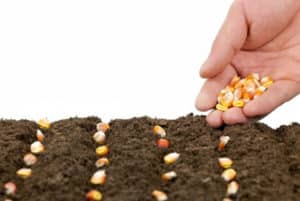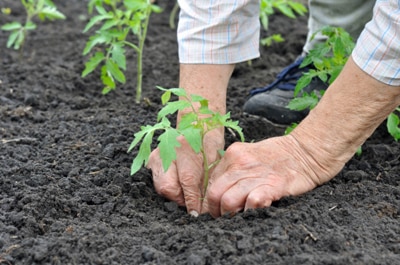Growing warm-season vegetables is an enjoyable activity that results in large harvests of homegrown produce favorites like tomatoes, corn, peppers and cucumbers. To have success with your summer garden, consider these tips for how to grow warm-season vegetables. When to plant vegetables Plant your warm-season vegetable garden when the nights are above 60 degrees, which means the soil has warmed sufficiently. Depending on your area of the country, this usually means sometime in April or May. If the soil is not warm enough, the roots and foliage will be stunted, and the vegetable plants will fail to produce. Choose an appropriate vegetable planting site A successful warm-season vegetable harvest requires that you plant in the ideal location. Look for a spot with good air circulation that receives a minimum of six to eight hours of sunlight each day. Warm-season vegetables to plant A wide variety of warm-season vegetable plants exist. Some common crops to consider planting that thrive in the spring and summer months include beans, corn, cucumber, eggplant, melon, pepper, pumpkin, soybean, squash, zucchini, tomatoes, and herbs like basil, rosemary and thyme. Many of these vegetables can be planted from seed, but keep in mind that you will need an extra four to eight weeks of growing time. If it is already spring, consider buying transplants instead, and plan on getting a head start on the growing season next February by seeding your warm-season garden indoors at that time. How to grow vegetables
- Prepare the planting site. Warm-season vegetables require a well-draining, rich soil. At least two week before planting, prepare the site by mixing in 2 to 3 inches of planter mix or compost, as well as a granular vegetable fertilizer. Work the amendment and fertilizer into the soil well with a cultivator or tiller until the earth is loose and easy to plant.
- Provide support. Vining and climbing vegetable plants like tomatoes, cucumbers and beans require a trellis or something on which to climb. Tomato cages should be at least 3 feet high and 2 feet wide and made of a durable metal that will not bend under the weight of maturing tomatoes.
- Plant. During the morning or evening when the sun’s rays are the least harsh, plant the vegetable plants, leaving 8 to 24 inches between plants. Some vegetables, such as corn, squash and tomatoes, require planting further apart so they have room to spread, whereas other vegetables like cucumbers and beans can be planted closer together.
- Remove the vegetable plants from the containers by gently squeezing the bottom of each plastic pot until the plants come free. Use a hand trowel to create a hole in the ground and insert the plant roots. Back-fill the hole with soil and gently tamp down the soil around the plant.
Water Irrigate warm-season vegetable plants well after planting and keep them moist but not soggy while they become established, which you know has occurred when you see new growth.


